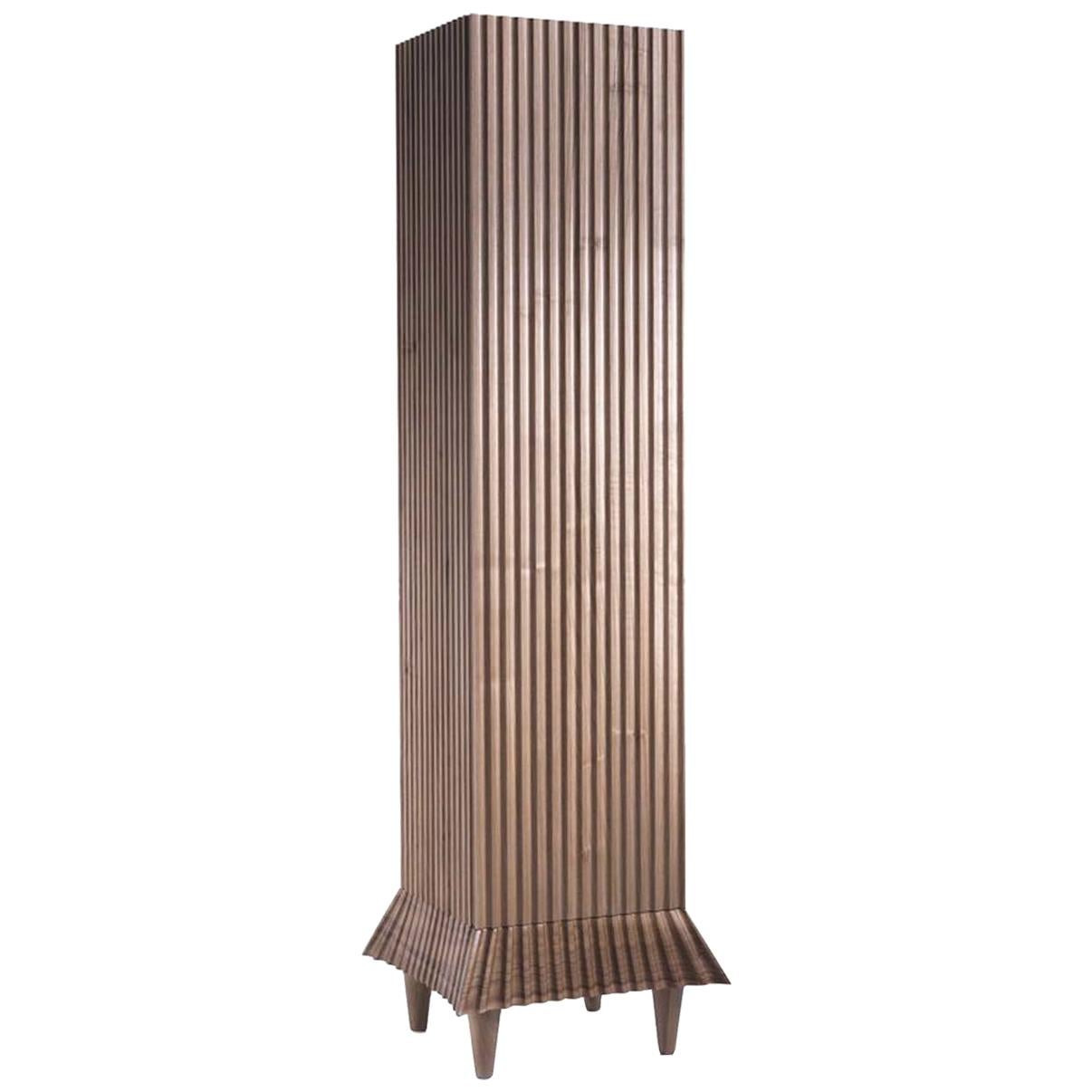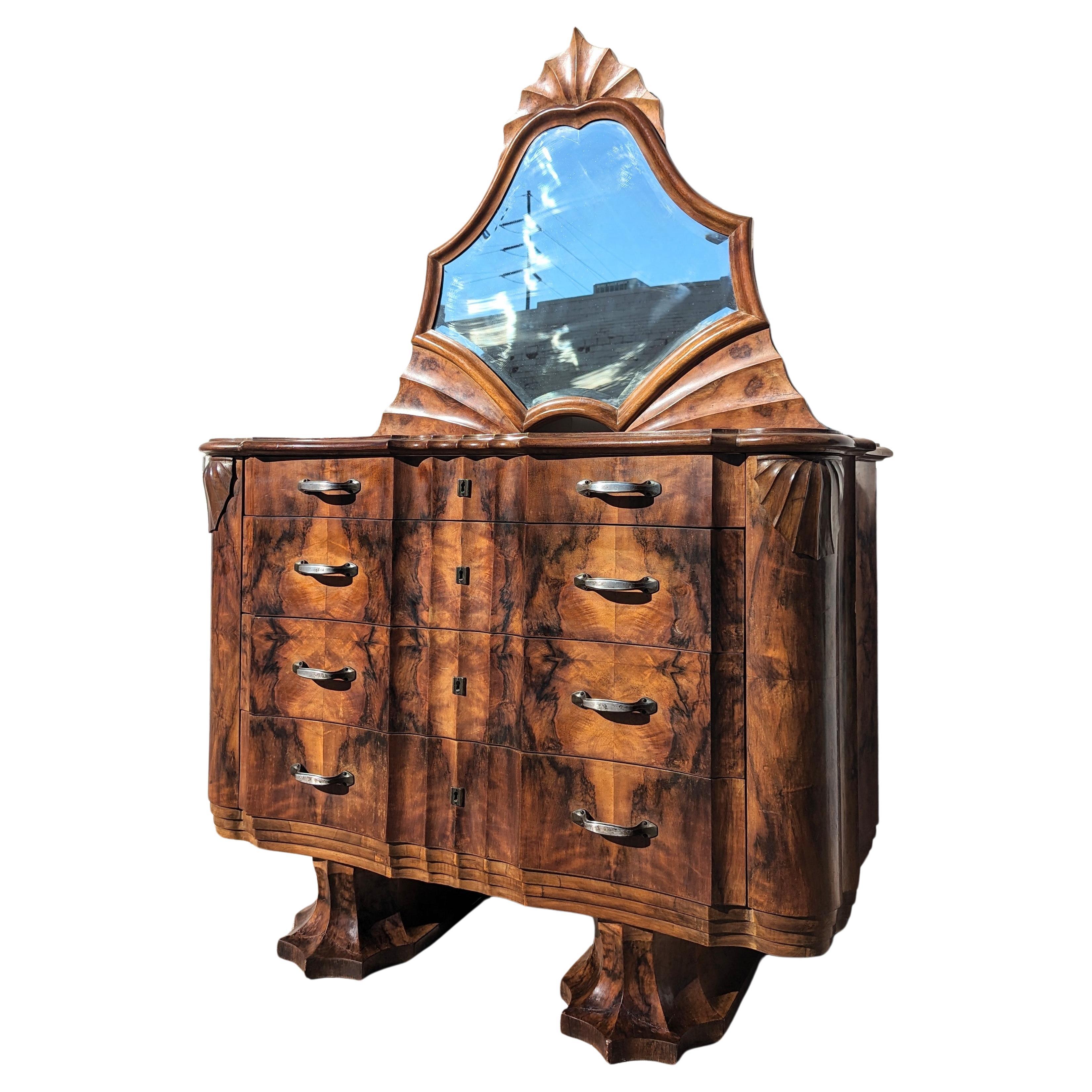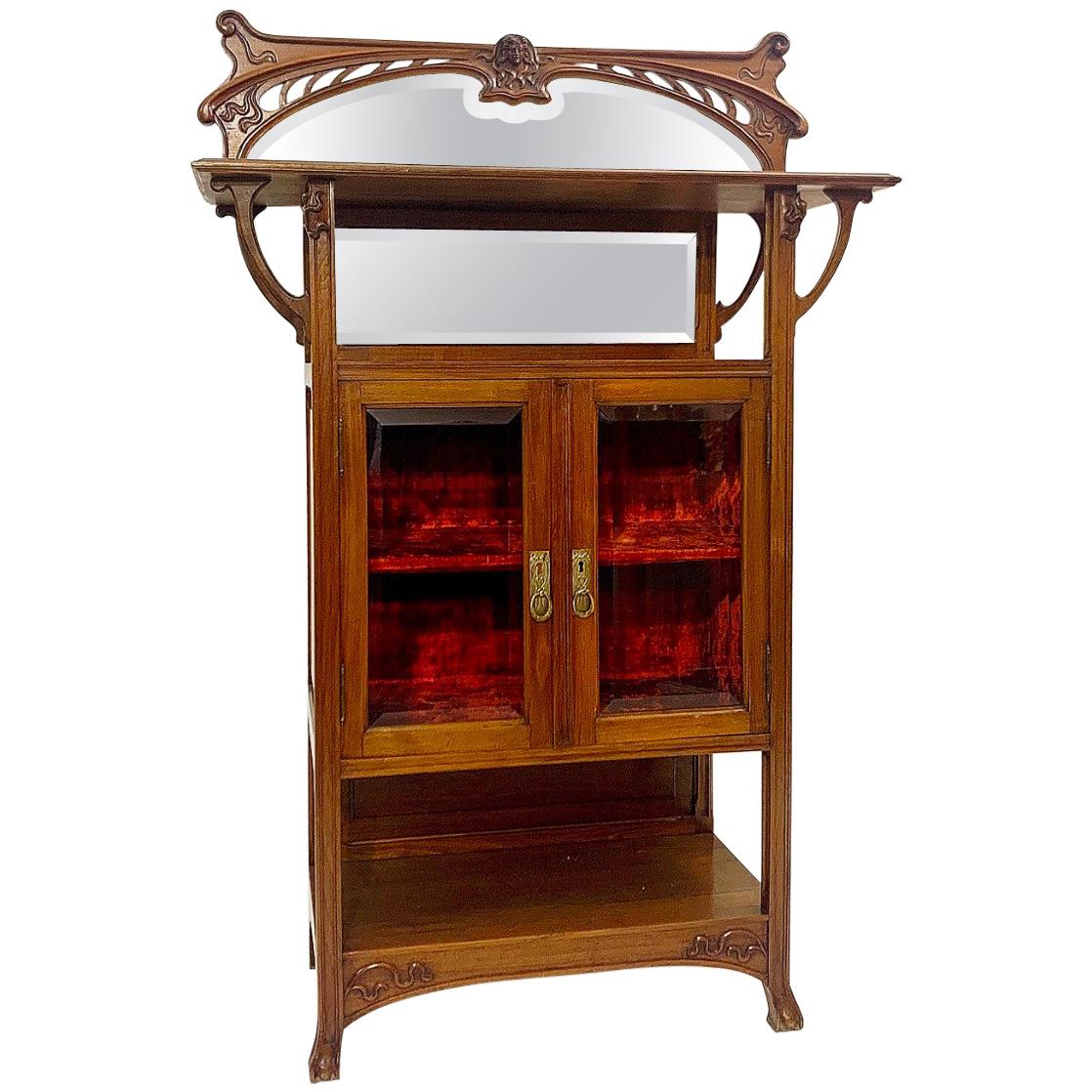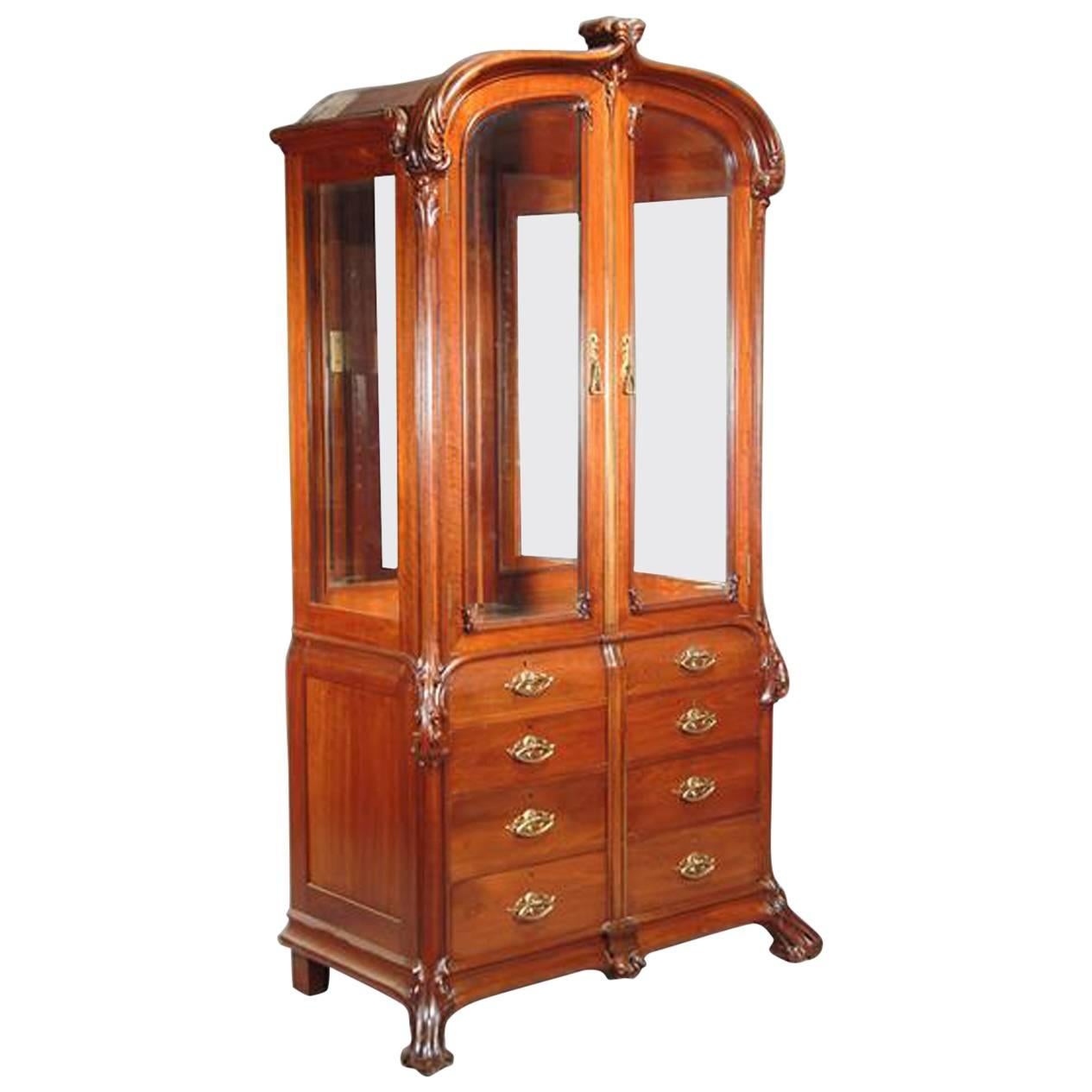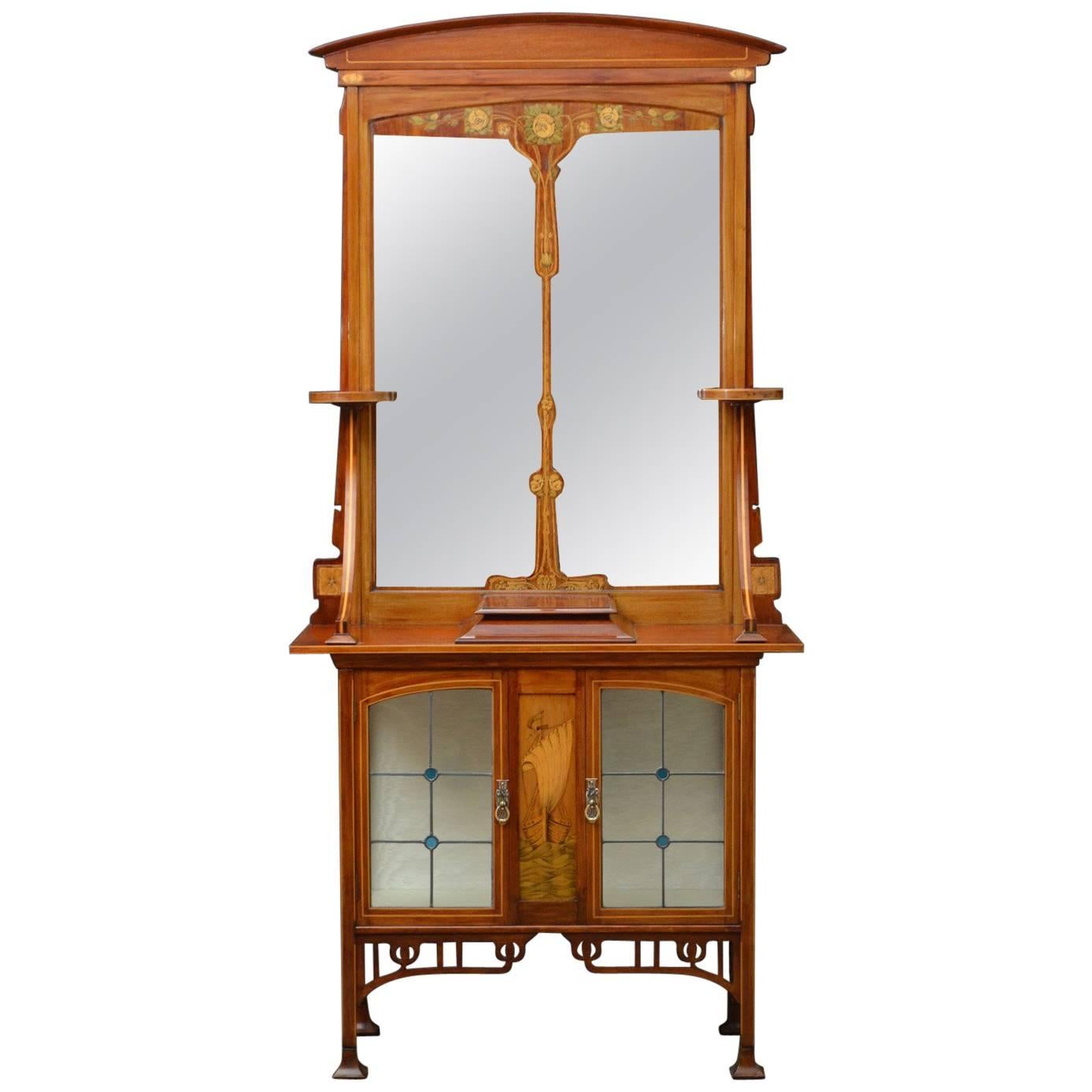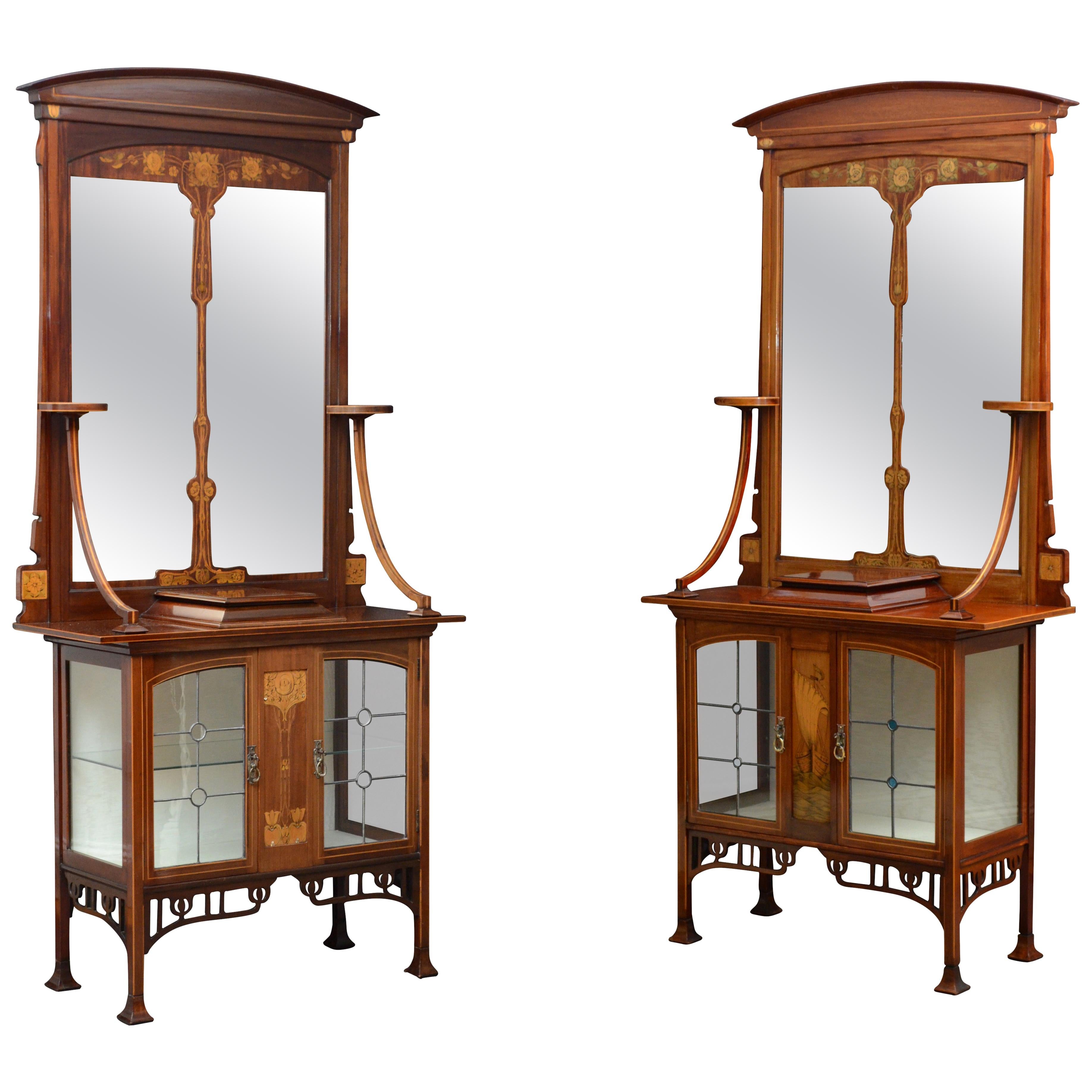Items Similar to Edouard Colonna Art Nouveau Paris "Bibliotheque Victor Hugo" Cabinet
Want more images or videos?
Request additional images or videos from the seller
1 of 13
Edouard Colonna Art Nouveau Paris "Bibliotheque Victor Hugo" Cabinet
About the Item
French Art Nouveau cabinet by Edouard Colonna, 1900-1901, identified in numerous period sources as Bibliotheque Victor Hugo. It is 57" wide x 16" deep x 83" high. Colonna used it as the image in his own full-page advertisements in 1900-1901. Fabricated in Ceylonese lemonwood and leaded stained glass. The drawings for the cabinet are in the Decorative Arts collection of the Louvre, notated in Art Nouveau Bing by Gabriel Weisberg. This cabinet was exhibited at Philadelphia Museum of Art. Also exhibited at the Nassau County Museum of Art's Reflections of Opulence, Art Nouveau to Art Deco, in 2001. It is pictured in the catalog from the exhibition.
Janet Calderwood
Tue, Apr 23, 12:07 PM (1 day ago)
to me
I found this in an email from a couple of years ago - is there space on 1stDibs to include a designer's bio? I did a lot of research to distill this info:
EDWARD COLONNA (b. Germany, Edouard Klonne 1862-1948)
Renowned Art Nouveau furniture, jewelry and objets d’art designer and architect, EDWARD COLONNA, was German-born and raised, studied architecture in Brussels, Belgium, became an American citizen, lived in Canada for several years, and had the artistic soul of a Frenchman.
Colonna was born in Muhlheim near Cologne (Koln), Germany in 1862. He studied architecture in Brussels and in 1882 he moved to the United States. There he found a position with Associated Artists, a group of interior decorators headed by Louis Comfort Tiffany, and participated in the interior design for real estate businessman Ogden Goelet and shipping magnate Charles Flint.
From 1884-85 he worked for the fashionable New York architect, Bruce Price. In 1885,with Price’s help, he settled in Dayton, Ohio and worked for Barney and Smith Manufacturing Company, where he designed railroad cars. While there he published, at the age of 25, the slender book, Essay on Broom-Corn (1887). Its intricate lettering and bold designs show hints of early aspects of Art Nouveau.
Just a year later, in 1888, after filing papers to become an American citizen, he established an office in Montreal and worked primarily for the Canadian Pacific Railway. This work included architectural designs for train stations as well as an elaborate sleeping car he created especially for the train exhibition at the Chicago World’s Fair of 1893.
Colonna was an active participant in exhibitions in the United States and Canada during this time. He was a member of the Architectural League of New York, entered exhibits at the Philadelphia Museum and School of Art, and belonged to the Montreal Art Association.
In 1893, in a turning point year and the end of his early career, Colonna left the U.S. for Europe and, in his own words, found “a more modernistically inclined public.” Following a few mystery-shrouded years in Colonna’s life, he emerged in 1897 as a designer for the well-known scholar, merchant and connoisseur of Fine taste, Sigfried Bing, in Paris. Bing was already established as a gallerist and had his gallery on rue de Provence et rue de Chauchat redesigned in order to launch “L’Art Nouveau” on December 26, 1895. His announced program was one of uniting the Fine and decorative arts, and the gallery was billed as the only permanent collection of decorative arts in Paris.
The name “L’Art Nouveau”, simply “new art” or “modern art” became the name of the turn-of-the-century style which today we describe as being hallmarked by undulating, whiplash lines with stylized floral and organic imagery, some totally abstract, and all with an elegant rhythm. Colonna’s years with L’Art Nouveau proved to be the pinnacle of his career and his designs adopted the characteristic whiplash curve of the period with elegance and appeal to the French sense of luxury. He often applied stylized bontanical forms as he designed jewelry, furniture, carpets and porcelain objects.
Colonna joined L’Art Nouveau Bing along with Eugene Gaillard and Georges De Feure, to form the trio of major designers. Bing directed this team to create designs which would be both modern and appealing to the French. Colonna’s designs spoke to the French sense of luxury and elegance and he often employed botanical forms with gently curvilinear lines. Following a time of creating individually crafted jewelry pieces, Colonna advanced to the design of large scale opjects, furniture and accessories.
His designs won him a silver medal at the The Exposition Universelle of 1900 in Paris, and another at the Turin Exposition of 1902.
Although L’Art Nouveau achieved high esteem among critics, it did not fare as well with the public. Bing, to his regret, closed its doors in 1903 and retired. Colonna’s artistic life, which had relied on Bing, changed abruptly and he returned to North America. He continued to work as an architect, artist, art dealer, antique dealer and designer. His later life seems to have been productive, and he lived to the age of 86, but the robust flowering of his career were the short years between 1897 and 1903. He died in Nice in 1948.
- Creator:Edouard Colonna (Cabinetmaker)
- Dimensions:Height: 83 in (210.82 cm)Width: 57 in (144.78 cm)Depth: 16 in (40.64 cm)
- Style:Art Nouveau (Of the Period)
- Materials and Techniques:
- Place of Origin:
- Period:1900-1909
- Date of Manufacture:circa 1900
- Condition:
- Seller Location:Philadelphia, PA
- Reference Number:
About the Seller
5.0
Recognized Seller
These prestigious sellers are industry leaders and represent the highest echelon for item quality and design.
Established in 1982
1stDibs seller since 2008
48 sales on 1stDibs
Typical response time: 1 hour
Associations
20th Century Specialists
- ShippingRetrieving quote...Ships From: Philadelphia, PA
- Return PolicyThis item cannot be returned.
More From This SellerView All
- Henri Rapin 1925 Paris Exposition Model CabinetBy Henri RapinLocated in Philadelphia, PAClassic French Art Deco cabinet by Henri Rapin, 1925, in cherry, rosewood, burled mahogany, ebony, and silvered metal. Finished interior with shelves. 31.5...Category
Vintage 1920s French Art Deco Cabinets
MaterialsSilver Plate
- Bouillaguet French Art Deco CabinetBy BouillaguetLocated in Philadelphia, PAFrench Art Deco semainier in teak with bronze fittings.Category
Vintage 1930s French Art Deco Cabinets
MaterialsTeak
- Louis Majorelle Cabinet with Wisteria MarquetryBy Louis MajorelleLocated in Philadelphia, PAFrench Art Nouveau small cabinet with marquetry by Louis Majorelle, circa 1900-1903. Documented.Category
Antique Early 1900s French Art Nouveau Cabinets
- French Art Deco Cabinet by Maxime Old, Rosewood with Parchment DoorsBy Maxime OldLocated in Philadelphia, PAFrench Art Deco cabinet by Maxime Old in rosewood with original parchment front and bronze mounts. Signed on verso with full signature. 89" long x 19" deep x 39" high. Maxime Old was (1910-1991) born in Maisons-Alfort (a suburb of Paris), France. He was the grandson and son of fine cabinetmakers. He received his formal training at Ecole Boulle in Paris and his work attracted the attention of the influential school director, Andre Frechet...Category
20th Century French Art Deco Cabinets
MaterialsRosewood
- Pierre-Paul Montagnac CabinetBy Pierre-Paul MontagnacLocated in Philadelphia, PAFrench 1940s cabinet by Pierre-Paul Montagnac. Model exhibited at the 1945 Salon d'Automne. This cabinet is a masterpiece of French cabinet-making designed by Pierre-Paul Montagnac....Category
Vintage 1940s French Art Deco Cabinets
MaterialsMetal
- Maxime Old Small CabinetBy Maxime OldLocated in Philadelphia, PAFrench Art Deco post-war cabinet in slip-matched ash parquetry with bronze pulls and mounts. Documented.Category
Vintage 1950s French Art Deco Cabinets
MaterialsAsh
You May Also Like
- Colonna CabinetBy Fratelli Boffi, Ugo La PietraLocated in Milan, ITThis stunning tall cabinet is part of a limited edition of 10 pieces designed by Ugo La Pietra. The narrow silhouette of this container, crafted of wood with a natural walnut honey f...Category
2010s Italian Cabinets
MaterialsWood
- Art Nouveau Burlwood CabinetLocated in Tulsa, OK**Please Read Entire Description** Please view all listing pictures on a laptop if possible. Some cell phones don’t display all listing pictures and some could be pictures relatin...Category
Vintage 1940s Italian Art Nouveau Cabinets
MaterialsOak, Maple, Burl
- Art Nouveau Mahogany Display CabinetLocated in Brussels, BEArt Nouveau mahogany display cabinet.Category
Vintage 1920s European Art Nouveau Cabinets
MaterialsWood
- French Art Nouveau Walnut Display CabinetLocated in London, GBA French Art Nouveau walnut display cabinet, with foliate carving, an arch top, two bevelled glazed doors, eight drawers with Art Nouveau gilt brass handles, on foliate scroll feet. ...Category
Early 20th Century Art Nouveau Cabinets
MaterialsWalnut
- Stylish Art Nouveau Cabinet with MirrorLocated in Whaley Bridge, GBSn4337 stylish Art Nouveau mahogany and marquetry hall cabinet or side cabinet, having arched cresting above divided mirror flanked by a pair of circular platforms on downswept supports, the projecting base having finely inlaid centre panel depicting sailing ship, outlined in boxwood and flanked by a pair of leaded, glazed doors enclosing glass shelf and fitted with original handles, working locks and two keys, all standing on square legs terminating in pad feet, all united by fretwork apron. This antique mirrored cabinet...Category
Antique Early 1900s British Art Nouveau Cabinets
MaterialsMahogany
- Unique Pair of Art Nouveau CabinetsLocated in Whaley Bridge, GBTwo superb Art Nouveau mahogany and inlaid cabinets with mirrors. Art Nouveau mahogany and marquetry hall cabinets, each having arched cresting above divided mirror flanked by a pai...Category
Antique Early 1900s English Art Nouveau Cabinets
MaterialsGlass, Mirror, Mahogany
Recently Viewed
View AllMore Ways To Browse
Art Nouveau Antique Furniture
Antique Art Nouveau Furniture
Jewellery Furniture
Antique Design Jewelry
Antique Art Pieces
Art Pieces Large
Antique Designers
Antique Designer
Museum Case
Antique Jewelry Furniture
New Nouveau
Both Paris
Used Museum Cases
Paris Furniture Galleries
Antique Cabinet Other
Large Modern Art Pieces
Scale Case
Short Cabinet
